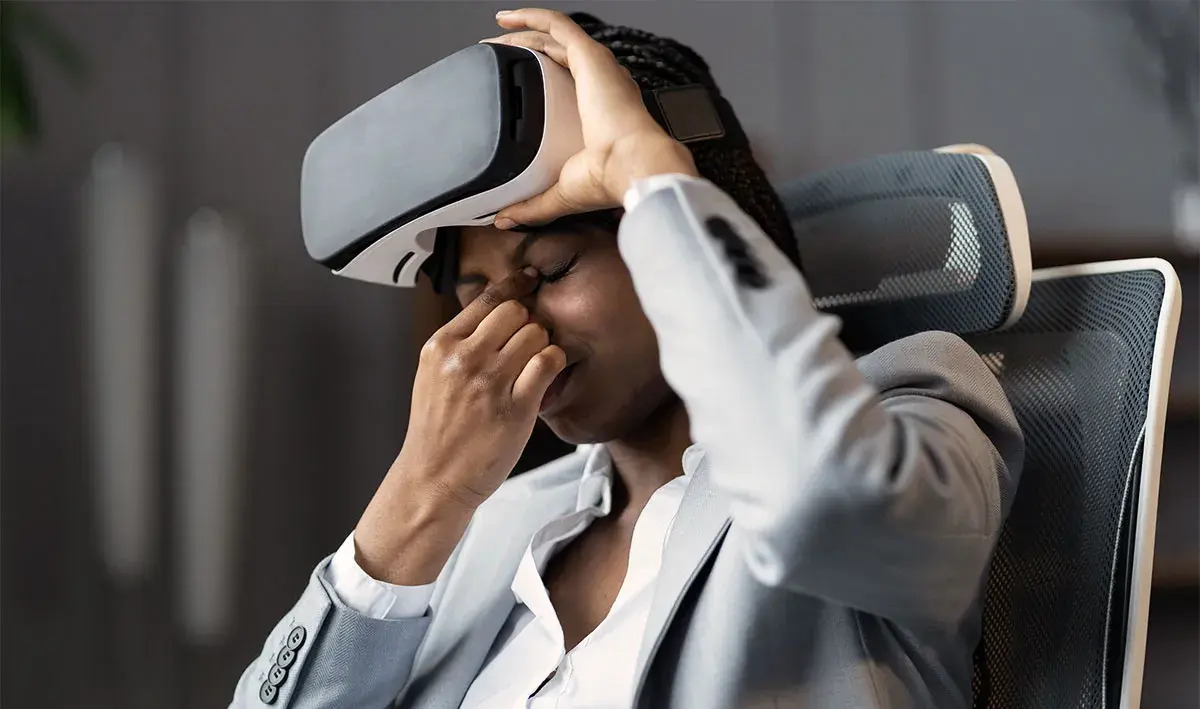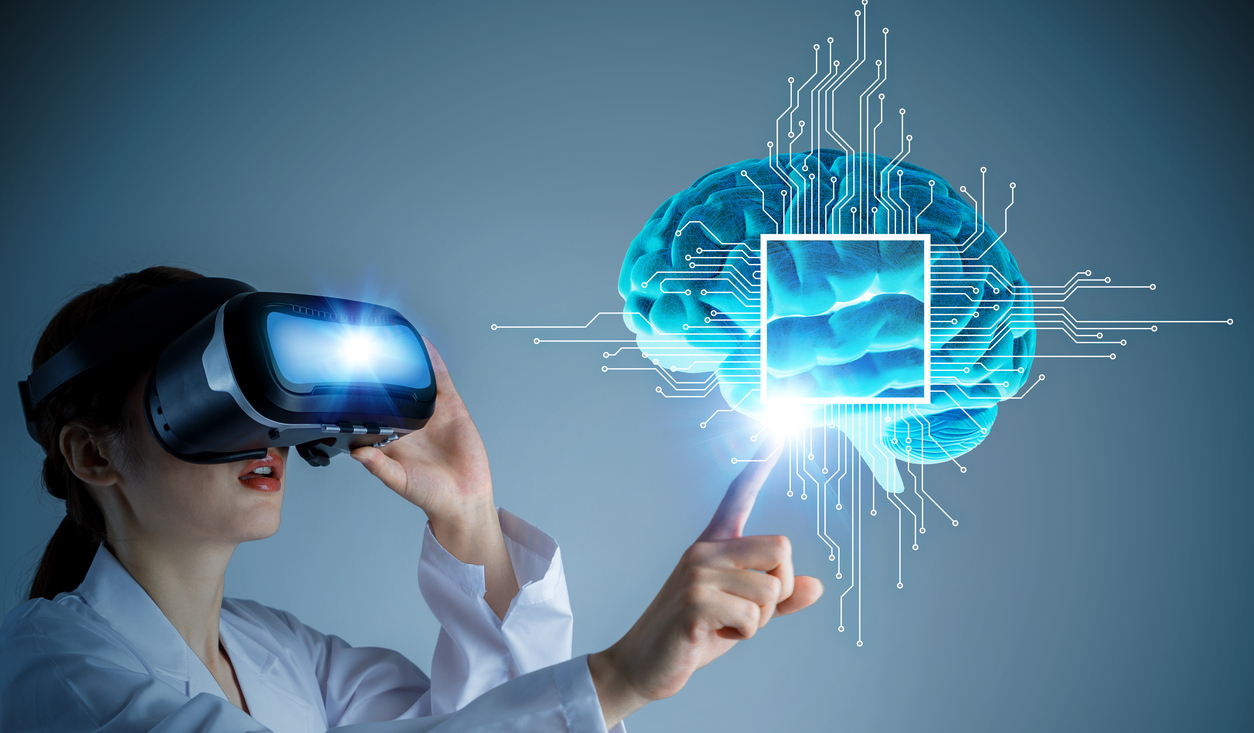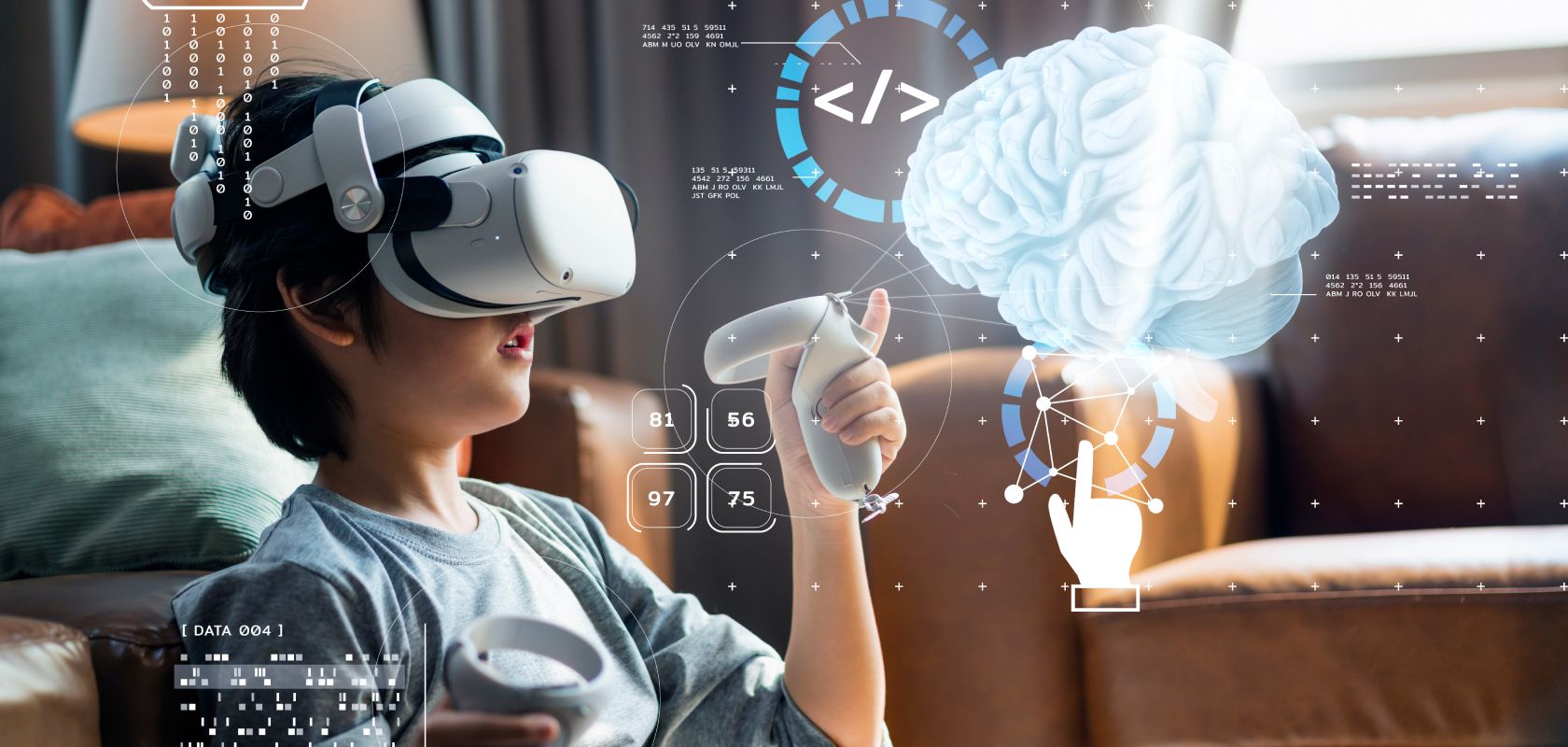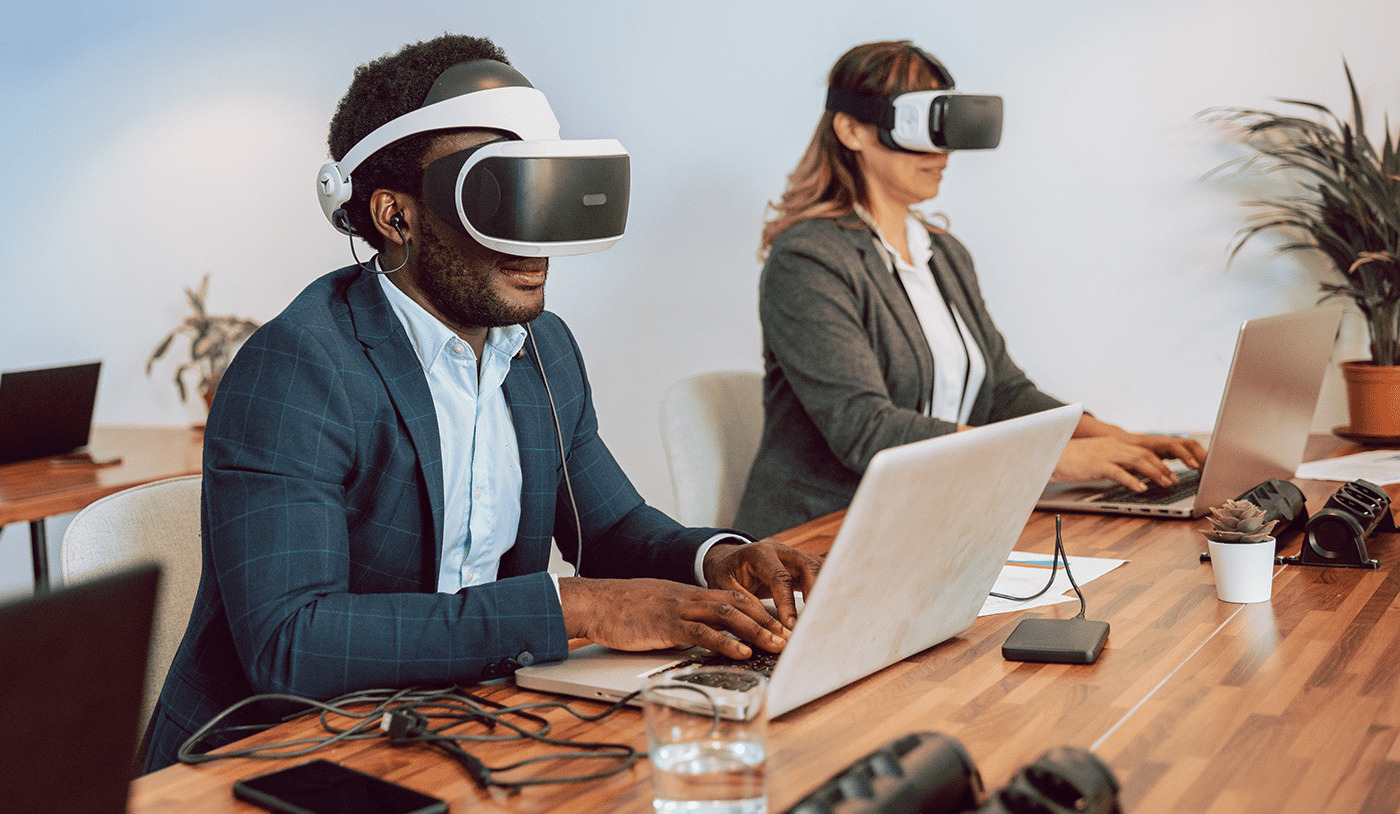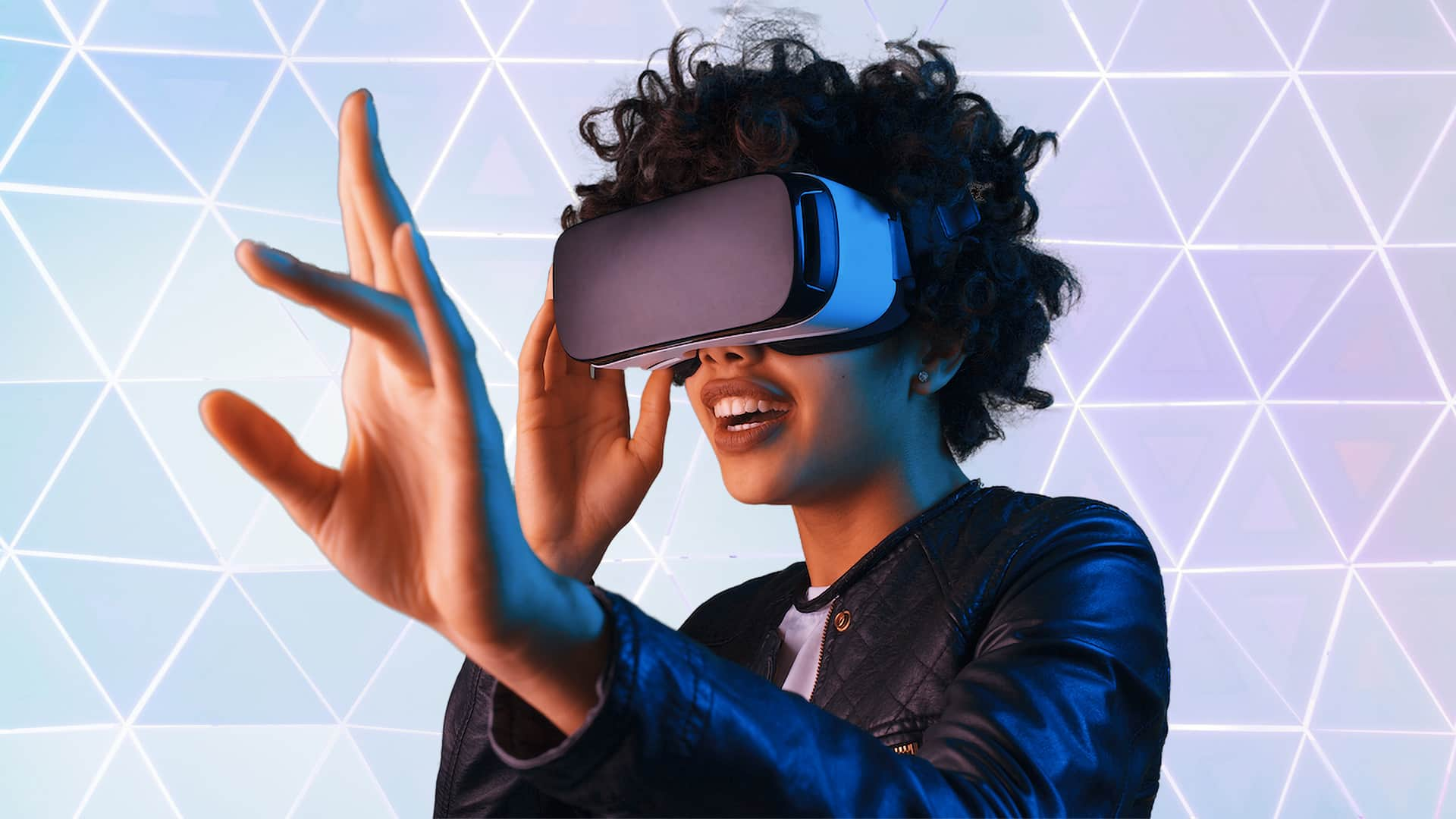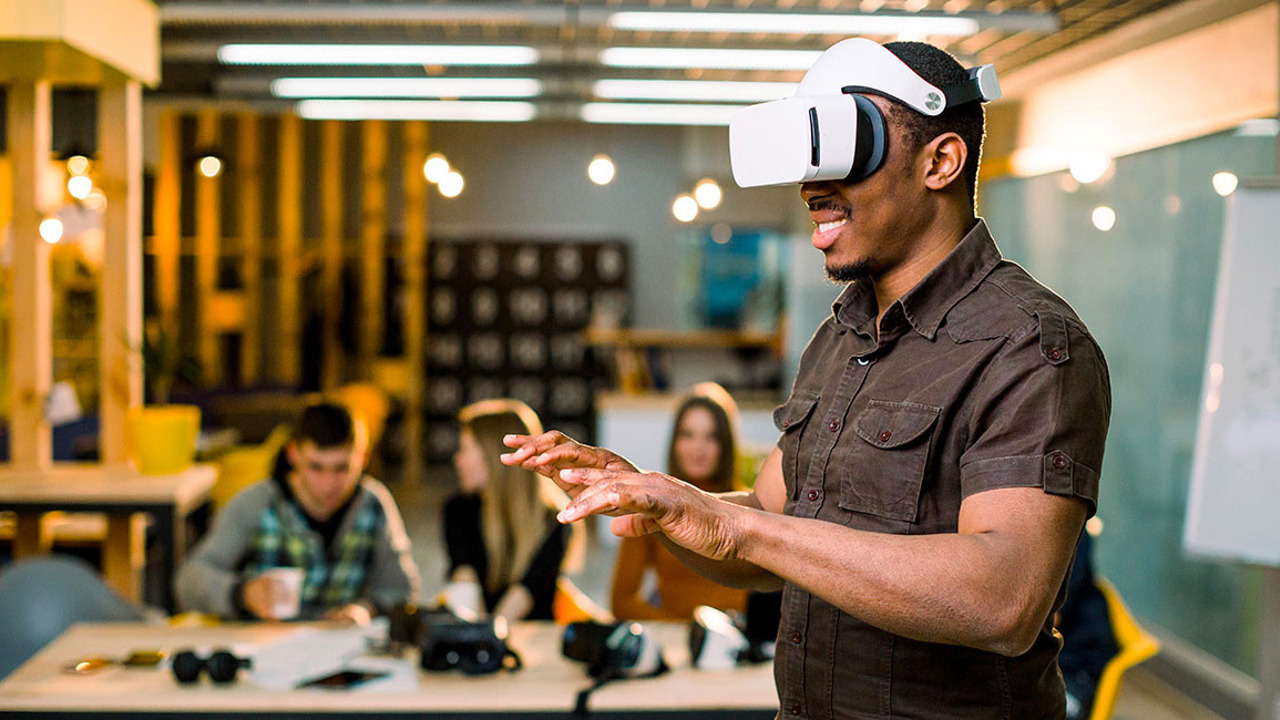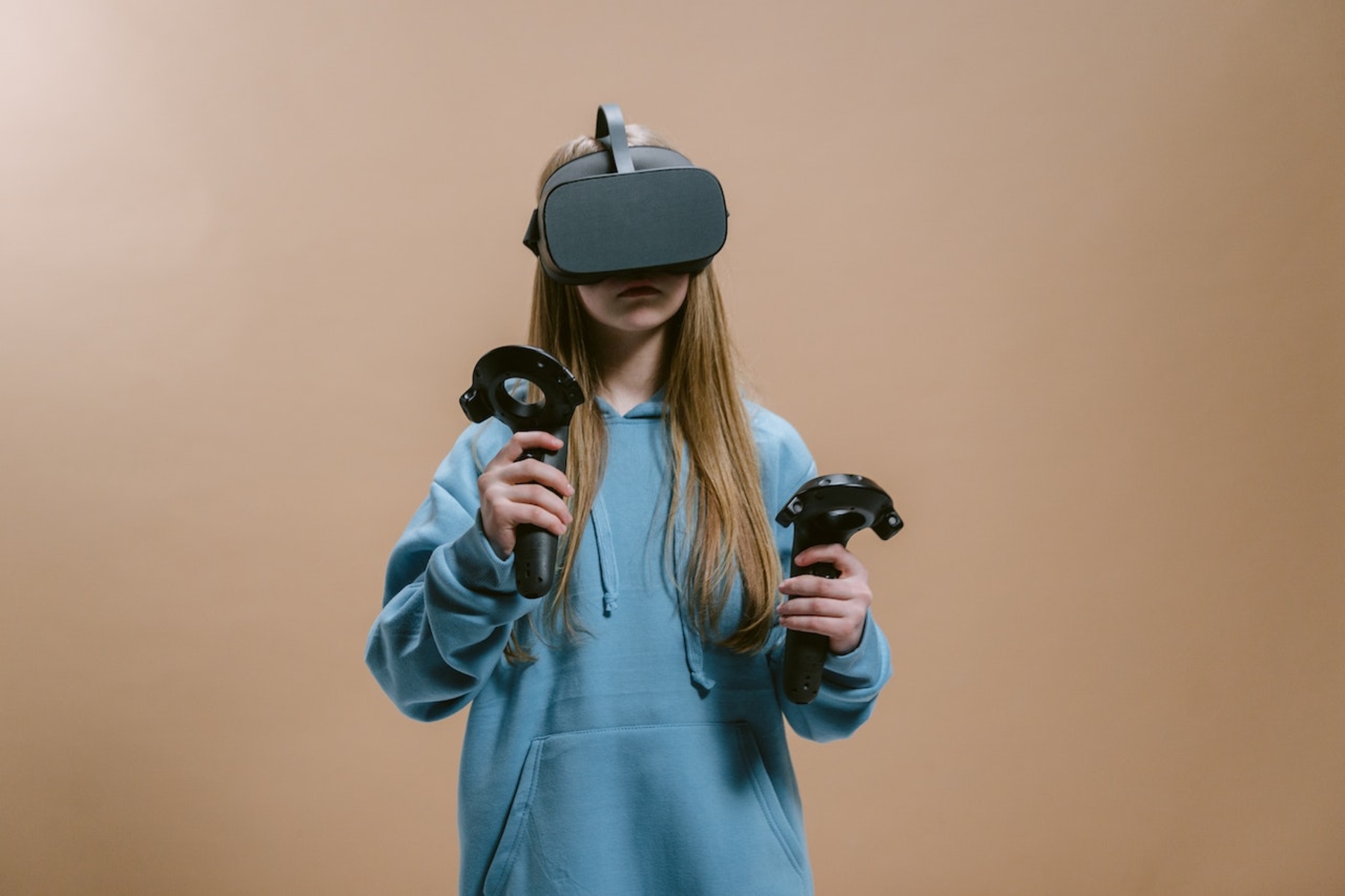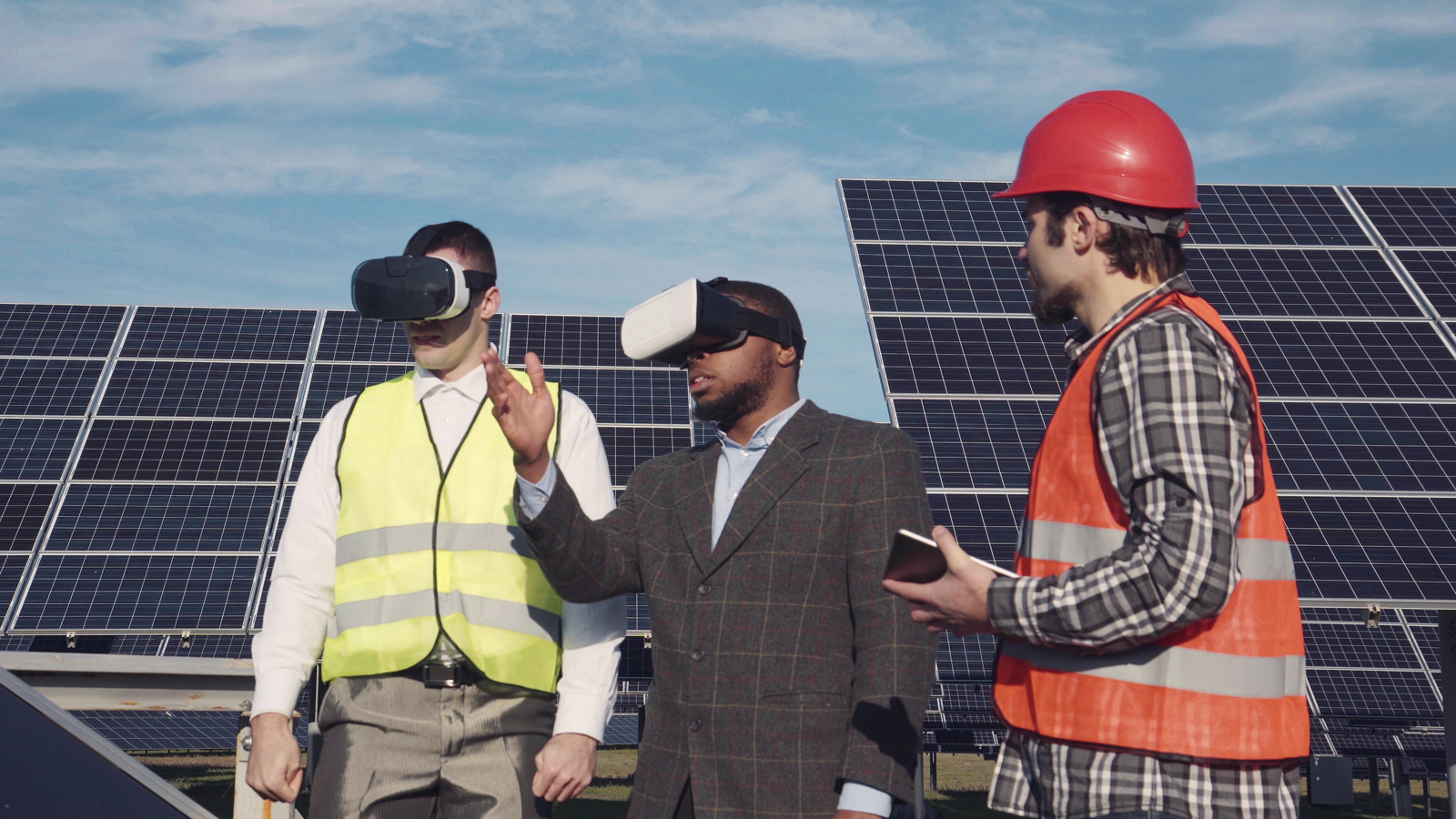Introduction
Virtual Reality (VR) systems have revolutionized the way we experience entertainment, education, and even social interactions. By immersing users in a simulated 3D environment, VR allows for a level of realism and interactivity that was previously unimaginable. However, along with the numerous benefits, there are also several inherent challenges associated with VR systems. In this article, we will explore some of the problems that are commonly faced in the world of virtual reality.
It is essential to understand that while VR offers an exciting and immersive experience, it is not without its limitations. As with any technology, there are concerns and hurdles that need to be addressed in order to fully harness the potential of virtual reality.
From motion sickness to eye strain, lack of physical interaction, and ethical concerns, there are various aspects that can pose challenges to users and developers alike. By recognizing and addressing these problems, we can work towards improving the VR experience and making it more accessible and enjoyable for everyone.
Over the course of this article, we will delve into the various issues associated with virtual reality systems, exploring the potential causes and proposing potential solutions. Whether you are an avid VR enthusiast, a developer, or simply curious about the technology, this article aims to shed light on the challenges faced in the world of VR.
Motion Sickness
One of the most common problems associated with virtual reality systems is motion sickness. This is a phenomenon where users experience dizziness, nausea, and general discomfort during or after using VR. It occurs when there is a discrepancy between the movement perceived by the user’s eyes and the movement detected by their inner ear, which is responsible for balance and spatial orientation.
The sensation of motion without actual physical movement can confuse the brain, leading to motion sickness symptoms. This is particularly prevalent in VR experiences that involve rapid movement, such as first-person games or roller coaster simulations. The sudden shifts in perspective and the disconnect between visual and physical cues can cause users to feel disoriented and unwell.
To mitigate the issue of motion sickness in VR, developers are implementing techniques such as reducing latency, optimizing frame rates, and minimizing sudden camera movements. These measures help to create a more seamless and immersive experience, reducing the likelihood of triggering motion sickness symptoms.
Another approach is to incorporate comfort settings within VR applications. These settings allow users to adjust parameters like field of view, movement speed, and intensity of visual effects to their personal comfort level. By providing users with the ability to customize their experience, developers can cater to a wider range of tolerance for motion sickness.
Additionally, properly designed VR hardware can play a significant role in reducing motion sickness. Headsets with high refresh rates, low latency, and accurate positional tracking are crucial in providing a more realistic and comfortable experience. As technology advances, we can expect VR devices to become more ergonomic and motion sickness-friendly.
Despite ongoing efforts to minimize motion sickness in virtual reality, it is important to note that some individuals are more prone to experiencing it than others. Factors such as age, susceptibility to motion sickness in the physical world, and pre-existing medical conditions can increase the likelihood of experiencing discomfort in VR. Therefore, it is important for users to take breaks, gradually acclimate themselves to virtual reality experiences, and consult with medical professionals if they have concerns.
Eye Strain and Visual Discomfort
Another problem associated with virtual reality systems is eye strain and visual discomfort. Spending extended periods of time immersed in a virtual environment can put a strain on the eyes and lead to fatigue, dryness, and even headaches. This is primarily due to the near-focus depth perception required in VR, as users are often required to focus on objects that are close to their eyes for prolonged periods.
The use of head-mounted displays (HMDs) in VR can exacerbate these issues. The small screens positioned close to the eyes can cause eye muscles to work harder to maintain focus, leading to strain and discomfort. Additionally, the lenses used in HMDs may not be perfectly aligned with every user’s eyes, resulting in a slightly distorted image that can further contribute to eye strain.
To address these problems, developers are implementing methods to reduce eye strain and visual discomfort in VR. Adjusting the interpupillary distance (IPD), which is the distance between the user’s eyes, can help align the images in the display with the user’s natural eye position, reducing visual discomfort. Incorporating eye-tracking technology, which can determine where the user is looking and adjust the display accordingly, can also help to alleviate eye strain.
Proper lighting conditions are also essential in reducing eye strain. Dimly lit or overly bright environments can strain the eyes further when combined with the brightness of VR displays. Therefore, ensuring optimal lighting conditions while using VR can significantly improve the overall comfort of the experience.
Another aspect to consider is the design of VR content itself. Developers are encouraged to create experiences that prioritize user comfort and minimize visual discomfort. This includes avoiding rapid flickering or sudden brightness changes, as well as providing options for users to adjust brightness, contrast, and color saturation to suit their preferences.
Users can also take steps to reduce eye strain and visual discomfort when using VR. Taking regular breaks, practicing the 20-20-20 rule (looking at an object 20 feet away for 20 seconds every 20 minutes), and adjusting the headset to fit comfortably and securely on the head can all contribute to a more comfortable and eye-friendly VR experience.
As technology continues to evolve, advancements in display technology and eye-tracking capabilities are expected to address the issue of eye strain and visual discomfort in VR. By prioritizing the well-being of users and implementing user-friendly design practices, developers can enhance the overall enjoyment and accessibility of virtual reality experiences.
Lack of Physical Interaction
One of the drawbacks of virtual reality systems is the lack of physical interaction with the virtual environment. While VR can create incredibly immersive visual and auditory experiences, the absence of tangible objects and physical feedback can detract from the overall realism and limit the scope of interactions.
In traditional reality, we rely on our sense of touch to interact with the world around us. We can feel the weight of objects, experience resistance when pushing or pulling, and use our hands and body to manipulate the environment. In VR, however, these physical sensations are often absent. This can be particularly evident in virtual environments that require fine motor skills or precise manipulation of objects.
Developers are actively exploring solutions to address this limitation. One approach is the use of haptic feedback devices, which provide users with tactile sensations to simulate physical interactions. These devices can range from gloves that provide sensory feedback to controllers that vibrate or apply pressure. By incorporating haptic feedback, users can experience a greater sense of presence and engagement in the virtual environment.
Another technique is the utilization of motion tracking technology, such as room-scale VR or full-body tracking. These systems allow users to move freely within a defined space and track their movements. While this enhances the feeling of immersion, it still falls short in terms of physical feedback. Users may be able to walk or run in VR, but they won’t feel any resistance or impact when doing so.
With the emergence of technologies like virtual reality gloves and exoskeletons, developers are making significant strides in bridging the gap between virtual and physical reality. These devices can provide users with a more realistic and tactile experience, allowing for a greater level of physical interaction within the virtual world.
While efforts are being made to improve the physical interactions in VR, it is important to recognize that complete replication of physical reality is a complex and ongoing challenge. As technology advances, we can expect to see more innovative solutions that enhance the physicality of virtual experiences and provide users with a more immersive and engaging environment.
Isolation and Social Disconnection
Virtual reality systems, despite their immersive and interactive nature, can sometimes contribute to feelings of isolation and social disconnection. While VR experiences can be incredibly engaging on an individual level, they often lack the presence of real-life social interactions and connections.
VR isolates users from their physical surroundings, transporting them to a virtual world where they may be alone or interacting with virtual characters. This isolation can be particularly prominent in single-player games or experiences where the user is the only participant. The lack of face-to-face interaction and the absence of real-time emotional cues and body language can lead to a sense of detachment from the real world and can contribute to feelings of social disconnection.
Furthermore, engaging in virtual reality experiences for extended periods can lead users to neglect their real-life social relationships and interactions. Spending excessive time in a virtual world can impact the amount of time and attention that individuals devote to their friends, family, and peers.
However, developers and researchers are aware of these potential issues and are actively working to address them. Multiplayer VR experiences, for example, aim to create social connections and foster a sense of community within virtual environments. Users can interact and collaborate with one another, enhancing the social aspect of the VR experience. This can be particularly beneficial for individuals who are unable to engage in face-to-face interactions due to geographical constraints or physical limitations.
Furthermore, social VR platforms are being developed, allowing users to connect with friends and strangers alike in virtual spaces. These platforms simulate a more realistic social environment and introduce elements such as avatars and voice chat to enhance social presence and meaningful interactions.
Despite these advancements, it is still crucial for users to maintain a balance between their virtual and real-life social connections. Recognizing the potential impact of excessive VR use on social relationships and setting healthy boundaries is important for maintaining overall well-being.
As virtual reality technology continues to evolve, it is essential that developers prioritize the social aspect of VR experiences, creating environments that foster connection, collaboration, and meaningful social interactions. By integrating features that bridge the gap between virtual and actual socialization, we can enhance the overall user experience and mitigate the potential for isolation and social disconnection in VR.
High Cost and Limited Accessibility
One of the challenges associated with virtual reality systems is the high cost of entry and limited accessibility. While the technology has become more advanced and available in recent years, it still remains relatively expensive, making it inaccessible for many individuals.
The cost of virtual reality hardware, such as headsets and controllers, can be prohibitive for budget-conscious consumers. Additionally, high-performance computers or gaming consoles are often necessary to power VR experiences, further adding to the overall cost. This financial barrier prevents a significant portion of the population from experiencing virtual reality.
Moreover, virtual reality systems require specific software and applications that may come with additional costs. Purchasing VR games, applications, or experiences can add up, making it less affordable for individuals with limited financial resources.
Another factor contributing to limited accessibility is the need for physical space. Some VR experiences, particularly those that involve room-scale VR, require a dedicated playing area with enough room for movement. Not everyone has the luxury of having a spacious area solely for VR, further limiting the accessibility of the technology.
However, as VR technology continues to evolve and become more popular, we can expect the cost to decrease and accessibility to improve. Manufacturers are working towards creating more affordable options, offering entry-level devices and bundles that cater to a wider range of budgets. This will make virtual reality more accessible to a broader audience.
Furthermore, advancements in cloud-based VR technology are being explored, which would eliminate the need for high-performance hardware by leveraging remote servers to process VR content. This could potentially reduce the overall cost of entry, making VR more accessible to individuals without powerful computers or gaming consoles.
Efforts are also being made to increase accessibility in terms of physical space requirements. Developers are creating VR experiences that can be enjoyed in smaller areas and designing games that incorporate seated or stationary gameplay, widening the range of possible VR setups.
It is important to note that while high cost and limited accessibility are challenges for widespread adoption of virtual reality, the technology is still in its relatively early stages. As it becomes more mainstream, we can anticipate increased affordability and accessibility, allowing more individuals to experience the wonders of virtual reality.
Technical Glitches and System Requirements
Virtual reality systems, like any other technology, are not immune to technical glitches and system requirements. Users may encounter hardware or software issues that can hinder their VR experience and overall enjoyment.
One common issue is compatibility between VR hardware and software. Different VR platforms may have varying system requirements and software specifications, making it challenging to ensure smooth compatibility between devices and applications. This can result in compatibility errors, crashes, or diminished performance.
Technical glitches, such as lag, stuttering, or freezing, can also occur during VR experiences. These issues can disrupt immersion and cause frustration for users. They may be caused by factors such as insufficient processing power, memory limitations, or software bugs. As VR experiences become more visually and computationally demanding, the need for powerful hardware and optimized software becomes crucial in delivering a seamless experience.
Additionally, calibration and tracking issues can affect the accuracy and precision of VR interactions. Tracking systems that rely on sensors or cameras may sometimes lose track of the user’s movements or fail to accurately map their movements in virtual space. Inaccurate tracking can disrupt the sense of presence and result in a less immersive experience.
Developers are constantly working to improve the stability and performance of VR systems. Regular updates and bug fixes are released to address issues and enhance compatibility. Software optimization is crucial in minimizing technical glitches and improving overall system performance.
It is important for users to ensure that their hardware meets the recommended specifications provided by manufacturers or software developers. This helps to minimize compatibility issues and ensures a smoother VR experience. Regularly updating drivers and firmware for VR hardware is also recommended to ensure the latest bug fixes and improvements.
While technical glitches and system requirements are present challenges in virtual reality, they are inevitable in any evolving technology. As the industry grows, advancements in hardware, software, and system optimization will continue to address these issues, providing users with a more polished and reliable VR experience.
Ethical and Privacy Concerns
As virtual reality continues to gain popularity and become more integrated into our lives, it brings about various ethical and privacy concerns that need to be addressed. These concerns arise due to the immersive nature of virtual reality and the potential impact it can have on user privacy, data collection, and ethical considerations.
One primary concern involves the collection and usage of user data. Virtual reality experiences often require the collection of personal information, such as names, addresses, and payment details. This information can be vulnerable to security breaches and unauthorized access if not handled and stored securely. Users must be mindful of the privacy policies of VR platforms and applications and be cautious about sharing sensitive personal information.
Furthermore, virtual reality can present ethical challenges in terms of content and user experiences. The immersive nature of VR can expose users to potentially harmful or disturbing content, and it is essential for developers and content creators to prioritize ethical considerations. Ensuring that virtual reality experiences do not perpetuate harmful stereotypes, promote violence, or infringe upon the privacy and dignity of individuals is crucial for maintaining an ethical approach to VR development.
Another aspect to consider is the potential effect of virtual reality on mental health and well-being. Excessive use of virtual reality can lead to addiction or the neglect of real-life responsibilities and relationships. This raises important ethical questions about the impact of VR on individuals’ mental health and the responsibility of developers to promote balanced and responsible usage.
When it comes to virtual reality technology, there is also a question of accessibility and inclusion. Developers must ensure that their VR experiences are accessible to individuals with disabilities and take into account factors such as mobility limitations or visual impairments. Failing to address these considerations can lead to exclusion and perpetuate inequalities.
Addressing these ethical and privacy concerns requires a collaborative effort from VR manufacturers, developers, and users. Stricter privacy policies and standards should be enforced to ensure the protection of user data. Ethical guidelines and practices need to be established within the VR industry to promote responsible content creation and usage. Additionally, creating inclusive and accessible VR experiences should be a priority to promote equality and diversity within the virtual world.
Ultimately, as virtual reality continues to evolve and become more prevalent, it is essential that ethical and privacy concerns are given proper attention and are integrated into the design and implementation of VR technologies. By doing so, we can ensure that virtual reality remains a beneficial and responsible tool for entertainment, education, and other applications.
Conclusion
Virtual reality (VR) systems offer incredible opportunities for immersive experiences and innovative applications. However, it is important to recognize and address the challenges that come with this technology. From motion sickness and eye strain to the lack of physical interaction and social disconnection, VR poses unique obstacles that require careful consideration and solution-seeking.
Despite these hurdles, the industry is actively working to overcome them. Developers are implementing advancements in hardware and software to minimize motion sickness and eye strain and enhance user comfort. Techniques like haptic feedback and motion tracking aim to bridge the gap between the physical and virtual worlds, addressing the lack of physical interaction. Multiplayer experiences and social VR platforms are fostering connections and combating social isolation.
High costs and limited accessibility remain barriers to widespread VR adoption. However, as the technology progresses, prices are expected to decrease, and more affordable options will become available. Efforts are being made to optimize system requirements, making VR accessible to a broader range of users. Similarly, ethical and privacy concerns are being addressed through stricter policies and responsible content creation to ensure user safety and protect privacy.
It is vital for users to be mindful of their VR usage and strike a balance between virtual and real-life interactions. Taking breaks, setting boundaries, and prioritizing social connections are essential for maintaining individual well-being.
In conclusion, virtual reality holds tremendous potential but comes with its fair share of challenges. By acknowledging and addressing issues such as motion sickness, eye strain, lack of physical interaction, social disconnection, high costs, system requirements, ethical concerns, and privacy, developers and users can work together to create a more immersive, accessible, and responsible virtual reality experience for all.







